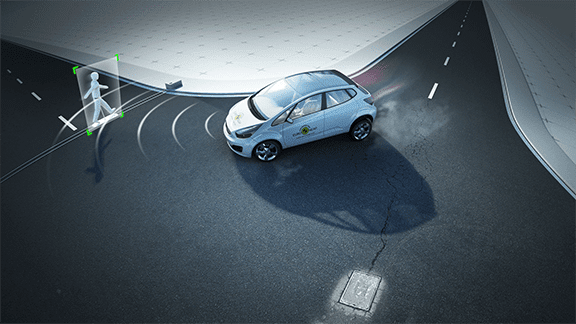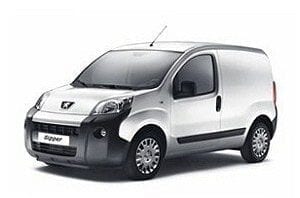
AEB - Autonomous Emergency Braking
Many accidents are caused by improper use of the brakes or insufficient braking power. The driver may be late for several reasons: he may be distracted or tired, or he may find himself in poor visibility conditions due to the low level of the sun over the horizon; in other cases, he may not have the time necessary to suddenly and unexpectedly decelerate the vehicle in front. Most people are not prepared for these situations and do not apply the necessary braking to avoid a collision.
Several manufacturers have developed technologies to help the driver avoid these types of accidents, or at least reduce their severity. The developed systems can be classified as autonomous emergency braking.
- Autonomous: act independently of the driver to avoid or mitigate impact.
- Emergency: only intervene in an emergency.
- Braking: They try to avoid being hit by braking.
AEB systems improve safety in two ways: first, they help avoid collisions by identifying critical situations in time and alerting the driver; second, they reduce the severity of unavoidable crashes by reducing the speed of a collision and, in some cases, preparing the vehicle and seat belts for impact.
Almost all AEB systems use optical sensor technology or LIDAR to detect obstacles in front of the vehicle. Combining this information with speed and trajectory allows you to determine if there is a real danger. If it detects a potential collision, AEB will first (but not always) try to avoid the collision by alerting the driver to take corrective action. If the driver does not intervene and an impact is imminent, the system applies the brakes. Some systems apply full braking, others partial. In either case, the goal is to reduce the speed of the collision. Some systems are disabled as soon as the driver takes corrective action.
Excessive speed is sometimes unintentional. If the driver is tired or distracted, he can easily exceed the speed limit without even realizing it. In other cases, he may miss a sign prompting you to slow down, such as when you enter a residential area. Speed Warning Systems or Intelligent Speed Assistance (ISA) help the driver maintain speed within specified limits.
Some display the current speed limit so that the driver always knows the maximum speed allowed on that section of the road. The rate limitation can, for example, be determined by software that analyzes images provided by a video camera and recognizes vertical marks. Or, the driver can be informed using particularly accurate satellite navigation. This naturally depends on the availability of constantly updated maps. Some systems emit an audible signal to warn the driver when the speed limit is exceeded; currently these are systems that can also be deactivated and require the driver to react to a warning.
Others do not provide speed limit information and allow you to set any value of your choice, alerting the driver if it is exceeded. Responsible use of these technologies makes driving safer and allows you to maintain speed control on the road.
